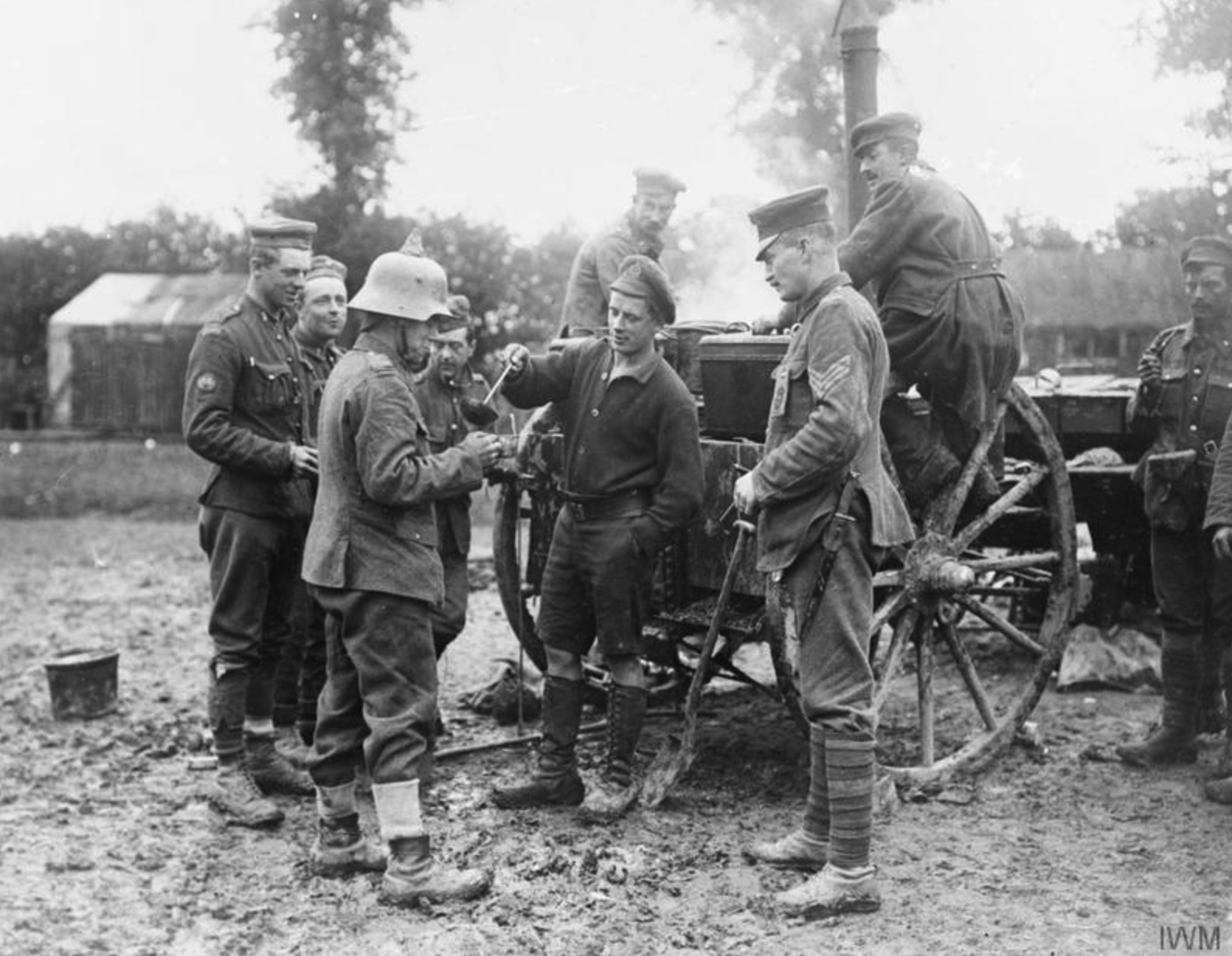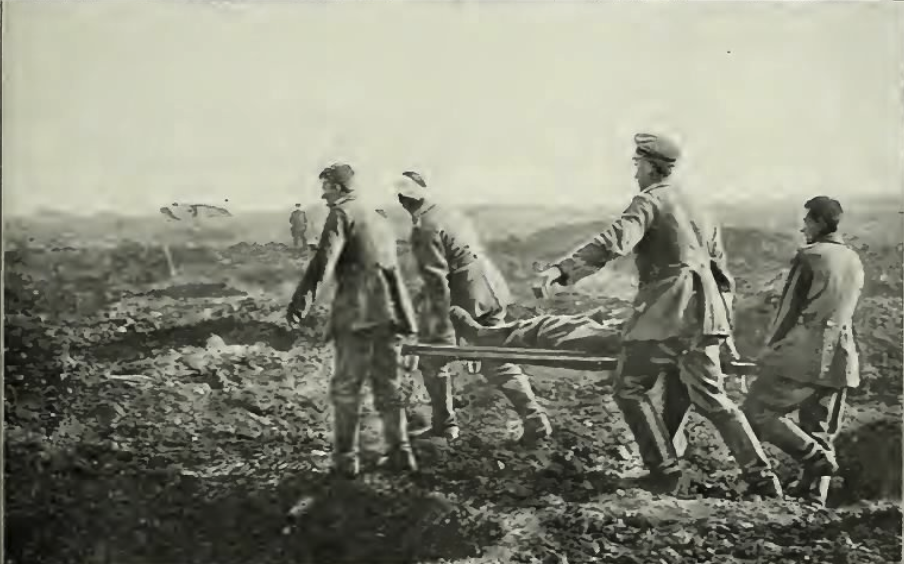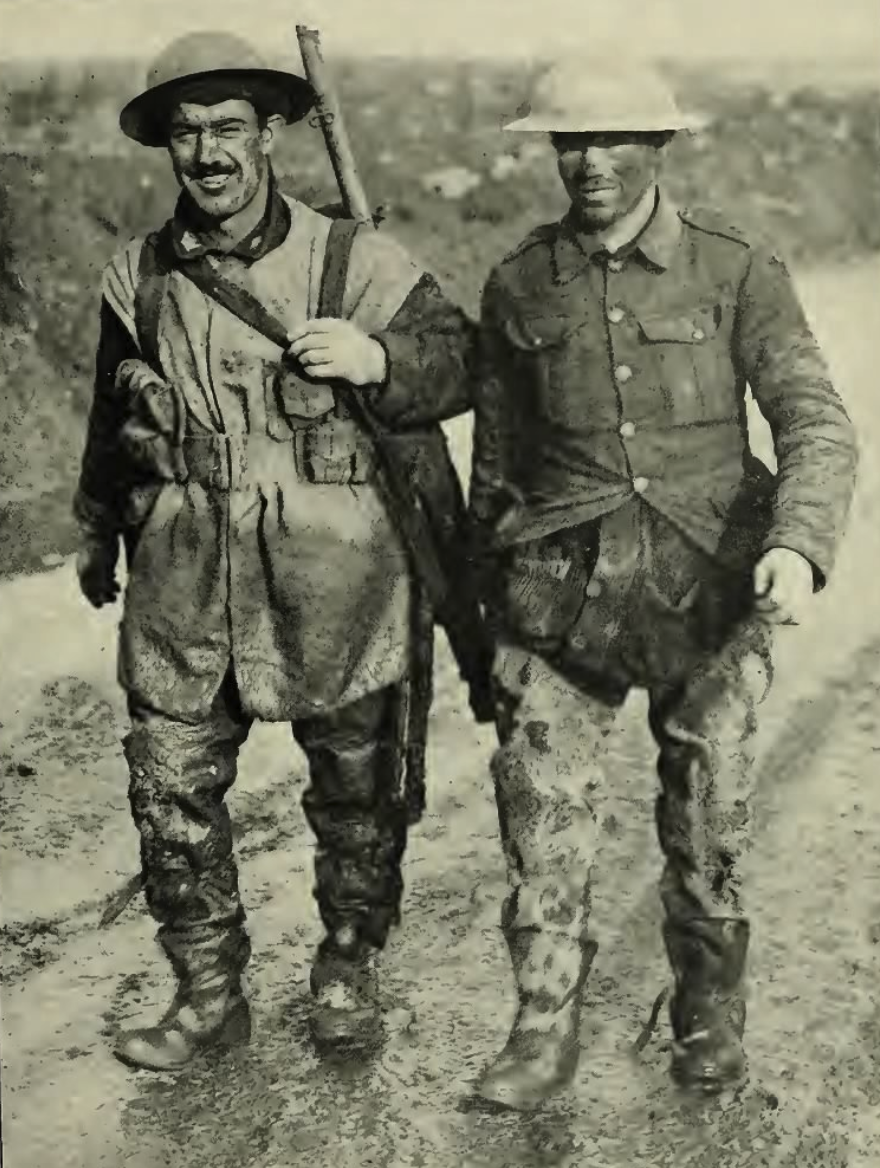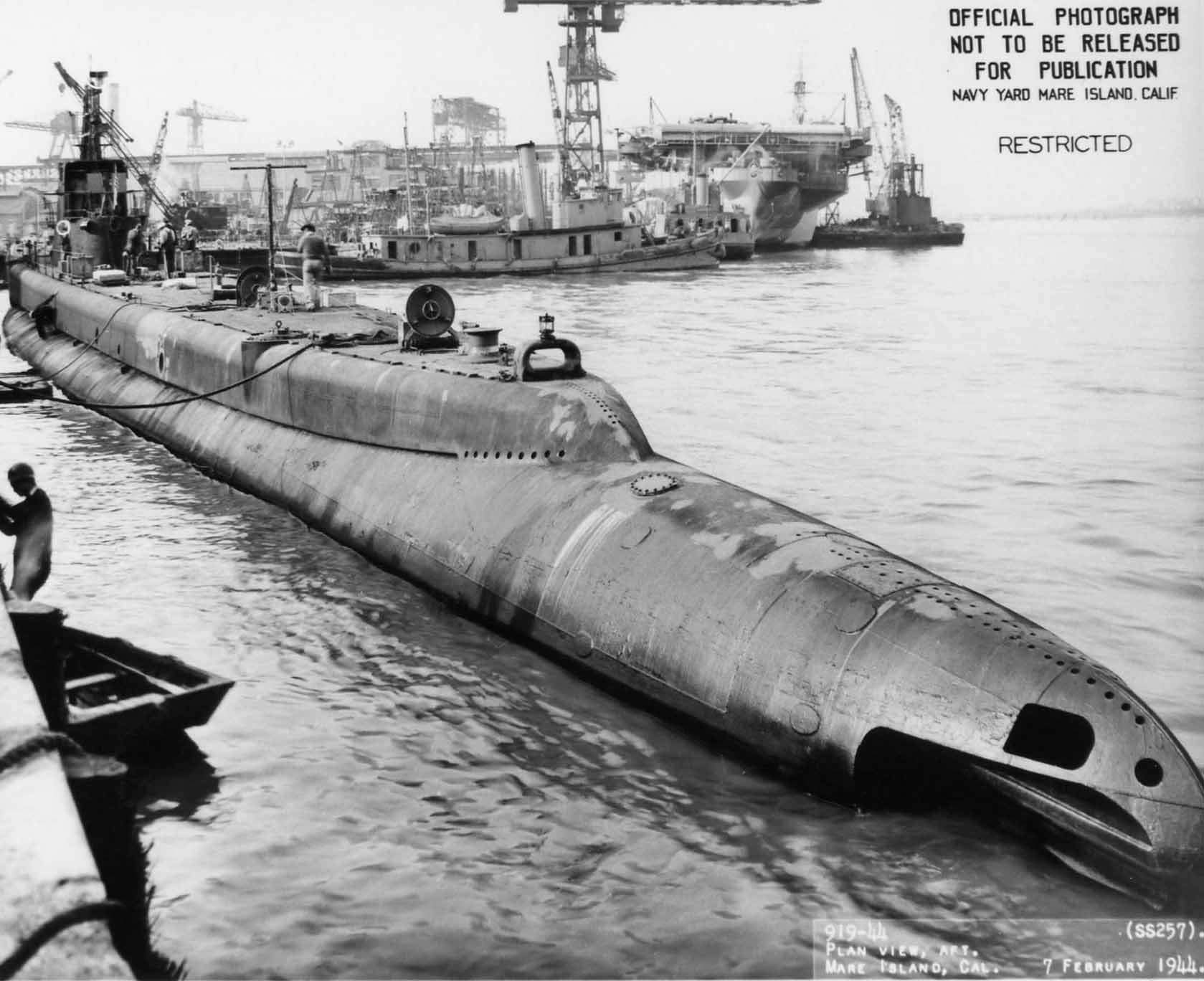The Canadian Expeditionary Force (CEF) was the force raised by Canada for service overseas during WWI. Some 620,000 Canadians who enlisted between 1914-1918 served in the CEF. Of those enlistees, about 424,000 went overseas. Most were volunteers, but when recruitment slowed, a conscription law went into effect in 1918. Our new Canadian Expeditionary Force, 1915-1919 collection contains nominal rolls, rosters, war diaries, yearbooks, and unit histories for the CEF. Before the war came to an end in November 1918, the CEF gained the respect of both friend and foe as an elite fighting force. There were more than 233,000 Canadian casualties during WWI, resulting in nearly 61,000 deaths.

As part of the British Empire, Canada automatically entered WWI in August 1914 when Britain declared war on Germany. Canada, however, had limited military forces and began accepting volunteer recruits to serve. The first Canadian division arrived in Europe in 1915 under the command of the British military. Additional battalions arrived as the war progressed. Soon Canada’s fighting forces evolved into a National Army.

Some examples of what you might find in this collection are unit histories like this one for the 13th Battalion that fought in the Battle of Vimy Ridge. If you have an ancestor that served as a nurse with the CEF, the nominal rolls for the Nursing Sisters are a great resource that provides the name and address for next of kin of the nurse enlistees. These women left their homes and families to care for soldiers with injuries and their dedicated work saved many lives.

The Canadian Grenadier Guards from the 87th Infantry Battalion were primarily recruited from Montreal but had members from every province of Canada. Their yearbook includes photographs of individual soldiers. The 160th Bruce Battalion was formed from residents of Bruce County, Ontario. In this collection, you can find a roster from the 160th Bruce Battalion from December 1916. The group celebrated the Christmas holiday at Bramshott Camp in England. Canadians in Khaki was a WWI pictorial newspaper that included stories of valor and heroism like this one for Sergeant-Major F. W. Hall who died during the Second Battle of Ypres. He served in the 8th Canadian Infantry Battalion in the front line trenches. To get to the trench, soldiers had to cross an exposed bank where enemy machine-gun fire resulted in many casualties. Sergeant-Major Hall left the safety of the trench twice to rescue wounded men who lie suffering on the exposed bank. While attempting to carry a third injured soldier back to the trench he was killed.
To explore this new collection of Canadian records, search our Canadian Expeditionary Force, 1915-1919 collection today on Fold3!





My grandfather was incarcerated near Ontario, Canada from 1914-1918 due to his Austrian birth and I have been able to find most of the information regarding this event…
If I can help any relatives with my information, contact me at [email protected].
Approx. 50,000 Americans and those with American NOK served with Canadian forces in WW I. They are accessed through this page on Fold 3:
https://www.fold3.com/title/849/foreign-burial-of-american-war-dead
Hi . I am looking for photos of The Sherbrooke Fusiliers. 2nd WW. My grandfather fought with them. He was from Cornwall Ontario. Canada. He was in the band?.. the company later amalgamated into the Hussans? I believe . If anyone could direct me to an area where i could access info . Would be much appreciated
Kind regards
Dorothy
My Great Uncle William George Kear was a sergeant in the Canadian PF and returned to England and onto France with Canadian 1st Div. Returning to Canada as Lieutenant serving with now national Army in the 1st CRHA Winnipeg. came back again in 1939 as a Captain QM 1st CRHA together with his son a sergeant. Retired 1946 a major.
I read the war diary of the 1st Canadian Division which I found of great interest as it tells of the high number of the soldiers were recent British immigrants to Canada and having came back with Canadian army found themselves camped on Salisbury Plain. Frequently going AWOL to visit the British relatives.
Later in France how they were subjected to going into the line as reinforcements during the first German gas attack
My great great uncle Frederick Cranston emigrated to Canada from Bailieborough, in Ireland and joined the CEF around 1915. He was sent to France and was killed in 1917 at the Battle of Vimy Ridge. I think he was part of the 20th Battalion, I have never seen him and I’d love to someday. If anyone could help I’d greatly appreciate it…
What about WWII veterans records, when will they be available?
Great question Major.
Yes, when can these soldiers be finally put on the internet. I have wondered for years! The Americans have allowed their WW II soldiers’ records to be exposed for genealogical research.
How can we be proud of our military ancestors if we can not examine their military deeds?
Perhaps this site will help with the answer https://www.bac-lac.gc.ca/eng/discover/military-heritage/second-world-war/Pages/introduction.aspx
My father was a Private John Allan Matthews from Prince Edward Island. You have pointed me to a Wiliam John Matthews–incorrect.
Is this your father?
https://central.bac-lac.gc.ca/.item/?op=pdf&app=CEF&id=B6048-S013
My grandfather, Bertie Grigg, had emigrated to Canada early in 1914 joining his older brother Arthur in Ontario. By October he was embarked for England with the 13th Battalion. His brother joined up later but I can’t find his record although he was at Vimy Ridge but survived to spend the rest of his life in Kingston, Ontario.
Mike Grigg
I found an Arthur John Grigg on the database who was discharged in Kingston. Was this not him?
https://www.bac-lac.gc.ca/eng/discover/military-heritage/first-world-war/personnel-records/Pages/list.aspx?SurnameSearch=Grigg&GivenNameSearch=Arthur&
Please also add the Royal Canadian Air Force during wwII as my biology father was a member of the RCAF
The photo at the top of this article is of German troops, not Canadian or Allied.
My Great Uncle HUTTON from the UK was in the Canadian RNVR during WWI. He was brother to my Grandmother Kathleen Hutton UK
I know there are family in Canada my sister has been in contact with them and I have been in contact with Alan Hutton my cousin on occasion.
Would like any information re Great Uncle and his RNVR
My grandfather, Tom Foreman fought and survived the battle of Vimy Ridge. He served under General Currie, commander of the Canadian 1st division. He was a soldier in the 7th Battalion British Columbia. The objective that day was to take and secure Farbus Wood, which the 1st Division forces accomplished under heavy casualties. I attended the 100th celebration of the battle of Vimy Ridge with hundreds of other proud Canadians from across Canada. Very Emotional, proud to be a Canadian
My great grandfather Narcisse Jackman
Emegrated to Canada from Belgium in 1912. He joined the Canadian Expiditionary Forces and fought in France.
His entire unit was gassed. They all died but Narcisse. He was sent to England to recover.
I can not find any record of his hospital stay or of the gassing event.
Does anyone have a relative who’s unit was gassed?
My Gr grandfather Thomas Johnson Abraham was a medic in WWI with the CEF. He enlisted with the 187th Battalion at Innisfail, AB and served with the 50th Battalion England & France, and also was in the 202nd Battalion. He also served in Belgium during the war. I was lucky enough to find his CEF Personnel file on Ancestry.com
Was Newfoundland part of this? I know Labrador and Newfoundland weren’t part of Canada at one time but can’t remember dates
My wife’s mother and father , both Americans, went to and apparently meet while working with Canadian forces in either Alberta or Saskatchewan. I don’t know if they enlisted or simply worked there. She as a nurse and ambulance driver.. To my knowledge they did not serve overseas. Could you direct me towards any source which might help. His name was Alfred Kipling and hers Martha von Thun.(or Doyle) since she left a divorce (and a child) to go to Canada.
WW11 THERE WAS AN AIRCRAFT CARRIER NAMED FOR THE BATTLE